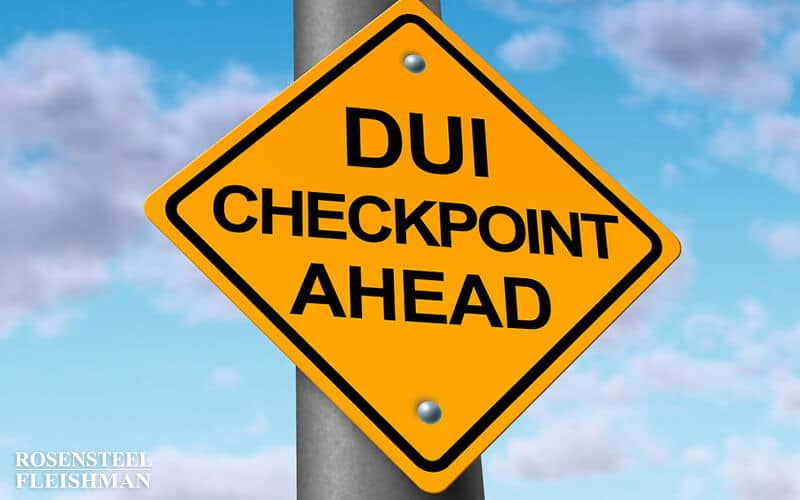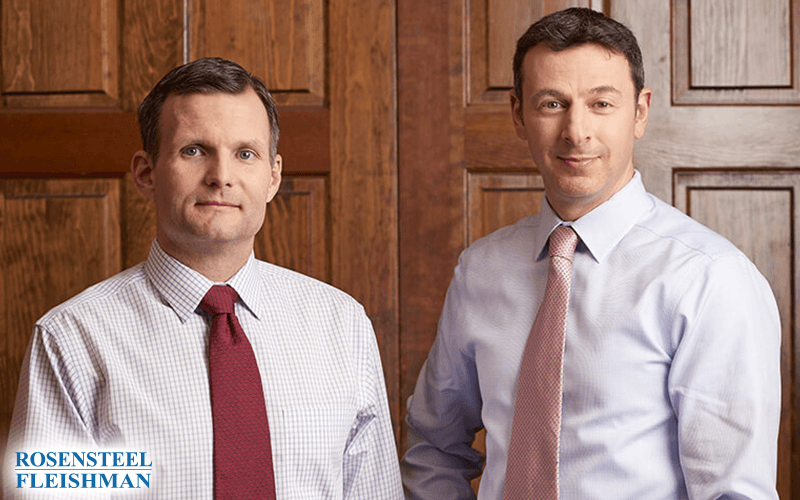While drunk driving accidents have been on the decline in the past few years, drunk driving is still a major problem in the United States and a leading cause of car accidents. The most recent statistics released by the National Highway Traffic Safety Administration show that approximately 28 people die in car accidents every day […]

Constitutionality Analysis of Checkpoints
Today, the North Carolina Court of Appeals issued an opinion in the case State v. McDonald which set out the appropriate framework under which to determine the constitutionality of a checkpoint. The court determined that the trial court did not conduct the necessary analysis and remanded the case for appropriate findings.
On March 11, 2010, the Charlotte Mecklenburg Police Department conducted a driver safety checkpoint. As required by North Carolina statute, the checkpoint was conducted pursuant to a written operational plan which stated that the purpose of the checkpoint was to “increase police presence” in the area and check for valid driver’s licenses and proper registration. The plan also provided that every car would be stopped and every driver would be asked to produce his license, unless the officer determined that a hazard had developed or that there was an unreasonable delay to motorists. In that case, the cars would be allowed to pass through until the hazard or the delay had cleared.
During the checkpoint, a car in which the defendant was a passenger was stopped. The officers who approached the car detected a strong odor of marijuana coming from the car. When the defendant opened the door and got out of the car, a bag of marijuana, two bags of cocaine, a digital scale, a cell phone and a set of keys fell out of the car. The defendant was then placed under arrest.
The defendant moved to suppress the evidence from the checkpoint, and the trial court denied this motion. The defendant then entered a plea of guilty and was sentenced to 6 to 8 months of imprisonment. This sentence was suspended, and the defendant was placed on probation for 24 months.
On appeal, the defendant argued that the trial court should not have denied his motion to suppress because the trial court did not determine the checkpoint’s primary programmatic purpose or reasonableness. Instead, the trial court denied the motion to suppress because the checkpoint was held in substantial compliance with required guidelines, relying on the 1996 court of appeals case State v. Barnes.
The court of appeals began its reasoning by noting that the analysis used for evaluating the constitutionality of checkpoints has changed since Barnes. The new analysis was set out in the 2008 court of appeals case State v. Veazy. In Veazy, the court of appeals required a two-part test for a constitutional challenge to a checkpoint based on U.S. Supreme Court cases decided after Barnes.
First, the court must identify the primary programmatic purpose of the checkpoint. The court noted that
the United States Supreme Court distinguished between checkpoints with a primary purpose related to roadway safety and checkpoints with a primary purpose related to general crime control. According to the Court, checkpoints primarily aimed at addressing immediate highway safety threats can justify the intrusions on drivers’ Fourth Amendment privacy interests occasioned by suspicionless stops. However, ... police must have individualized suspicion to detain a vehicle for general crime control purposes, and therefore a checkpoint with a primary purpose of general crime control contravenes the Fourth Amendment.
In addition,
a checkpoint with an invalid primary purpose, such as checking for illegal narcotics, cannot be saved by adding a lawful secondary purpose to the checkpoint, such as checking for intoxicated drivers. Otherwise, ... law enforcement authorities would be able to establish checkpoints for virtually any purpose so long as they also included a license or sobriety check. For this reason, courts must examine the available evidence to determine the primary purpose of the checkpoint program.
Second, the court must determine whether the checkpoint is reasonable.
To determine whether a checkpoint was reasonable under the Fourth Amendment, a court must weigh the public’s interest in the checkpoint against the individual’s Fourth Amendment privacy interest. … [W]hen conducting this balancing inquiry, a court must weigh (1) the gravity of the public concerns served by the seizure, (2) the degree to which the seizure advances the public interest, and (3) the severity of the interference with individual liberty. If, on balance, these factors weigh in favor of the public interest, the checkpoint is reasonable and therefore constitutional.
In applying this test to the McDonald case, the court of appeals noted that the trial court found that the purpose of the checkpoint was “[t]o increase police presence in the targeted area while checking for Operator’s License and Vehicle Registration violations,” which is established as legitimate purpose. The defendant argued that an additional purpose of the checkpoint was to increase police presence in the area, which the defendant equated with a general crime control purpose. The court rejected this argument because it did “not believe an attempt to increase police presence in an affected area while conducting a checkpoint for a recognized lawful purpose is akin to operating a checkpoint for the general detection of crime.” Furthermore, the defendant did not present any evidence suggesting that the checkpoint was being conducted for the purpose of general crime control.
Next, the court of appeals looked at the reasonableness of the checkpoint. The court noted that
[t]he first Brown factor — the gravity of the public concerns served by the seizure — analyzes the importance of the purpose of the checkpoint. This factor is addressed by first identifying the primary programmatic purpose . . . and then assessing the importance of the particular stop to the public.
Under, “the second Brown prong — the degree to which the seizure advanced public interests — the trial court [is] required to determine whether the police appropriately tailored their checkpoint stops to fit their primary purpose.” Factors to consider when evaluating the second Brown prong are “whether police spontaneously decided to set up the checkpoint on a whim; whether police offered any reason why a particular road or stretch of road was chosen for the checkpoint; whether the checkpoint had a predetermined starting or ending time; and whether police offered any reason why that particular time span was selected.”
Last, the third Brown factor requires “restrictions on the discretion of the officers conducting the checkpoint to ensure that the intrusion on individual liberty is no greater than is necessary to achieve the checkpoint’s objectives.” Factors to consider when evaluating the third Brown factor are
the checkpoint’s potential interference with legitimate traffic; whether police took steps to put drivers on notice of an approaching checkpoint; whether the location of the checkpoint was selected by a supervising official, rather than by officers in the field; whether police stopped every vehicle that passed through the checkpoint, or stopped vehicles pursuant to a set pattern; whether drivers could see visible signs of the officers’ authority; whether police operated the checkpoint pursuant to any oral or written guidelines; whether the officers were subject to any form of supervision; and whether the officers received permission from their supervising officer to conduct the checkpoint.
However, these factors are not “lynchpins” and the totality of the circumstances must be considered.
The court of appeals then concluded that because the trial court did not apply this test to the McDonald case, the trial court did not “adequately assess the Checkpoint’s reasonableness under the constitutional framework.” The court then vacated the trial court’s order and remanded the case so that the trial court could make appropriate findings.
If you have been charged with a dwi at a checkpoint, contact an attorney at Rosensteel Fleishman Car Accident & Injury Lawyers (704) 714-1450, to discuss your options.
Additional DWI Articles
I. You Will Need a Lawyer Just because someone has had drinks, does notautomatically mean that the law should rest on their shoulders and result in an automatic conviction. That is partly why, under North Carolina law, a series of safeguards have been adopted. These safeguards often rely on, and are helpfully followed, by experienced […]
I. Working While Impaired It is a sobering crisis. We cannot say for sure just exactly how many people drink during work hours, and then drive a vehicle within a short period of time after leaving the restaurant or bar. Often, it requires help from a car accident attorney to see if this drinking is […]
I. PC for DWI An experienced Charlotte criminal trial attorney is aware of the unique place that DWI charges can play in North Carolina courts. There’s no doubt that the public generally supports crackdowns on DWI offenses in North Carolina. But here’s the news flash: as important as DWI is, to maintaining public safety, it’s […]
